From the Illuminati over at Wikipedia;
The Hawker Siddeley Harrier, developed in the 1960s, was the first of the Harrier Jump Jet series of aircraft. It was the first operational close-support and reconnaissance fighter aircraft with vertical/short takeoff and landing (V/STOL) capabilities and the only truly successful V/STOL design of the many that arose in that era. The Harrier was developed directly from the Hawker Siddeley Kestrel prototype aircraft, following the cancellation of a more advanced supersonic aircraft, the Hawker Siddeley P.1154. The British Royal Air Force (RAF) ordered the Harrier GR.1 and GR.3 variants in the late 1960s. It was exported to the United States as the AV-8A, for use by the US Marine Corps (USMC), in the 1970s.
During the Harrier's service the RAF positioned the bulk of the aircraft in West Germany to defend against a potential invasion of Western Europe by the Warsaw Pact forces; the unique abilities of the Harrier allowed the RAF to disperse their forces away from vulnerable airbases. The USMC used their Harriers primarily for close air support, operating from amphibious assault ships, and, if needed, forward operating bases. Harrier squadrons saw several deployments overseas. The Harrier's ability to operate with minimal ground facilities and very short runways allowed it to be used at locations unavailable to other fixed-wing aircraft. The Harrier received criticism for having a high accident rate and for a time-consuming maintenance process.
In the 1970s the British Aerospace Sea Harrier was developed from the Harrier for use by the Royal Navy (RN) on Invincible-class aircraft carriers. The Sea Harrier and the Harrier fought in the 1982 Falklands War, in which the aircraft proved to be crucial and versatile. The RN Sea Harriers provided fixed-wing air defence while the RAF Harriers focused on ground-attack missions in support of the advancing British land force. The Harrier was also extensively redesigned as the AV-8B Harrier II and British Aerospace Harrier II by the team of McDonnell Douglas and British Aerospace. The innovative Harrier family and its Rolls-Royce Pegasus engines with thrust vectoring nozzles have generated long-term interest in V/STOL aircraft. Similar V/STOL operational aircraft include the contemporary Soviet Yakovlev Yak-38. The F-35B V/STOL variant of the Lockheed Martin F-35 Lightning II is under development.
Yes - the plane, the myth, the legend, the mighty Harrier Jump Jet. I love this type and have wanted to build one since day 1 of downloading SimplePlanes (you should see the dogs dinner I made of THAT...).
Anyway - the controls;
*NOTE! The throttle position will depend on the load out - now that the Harrier has gained 5 stores points, you can load her with all sorts of interesting explosives. The % figures given here are ballpark - ish figures, as it were.
AG1 - Unlock / Lock thrust vectoring nozzles
AG2 - Unlock / Lock nose and wingtip landing gear
AG3 - Arm cannons
AG4 - Lights
AG5 - Not used,
AG6 - Ditch inner stores
AG7 - Ditch outer stores
AG8 - VTOL stability assist system on / off
So - VTOL take off procedure goes like this;
1. Ensure AG 1 and AG8 are active.
2. Using the vtol slider, set the nozzles perpendicular to the ground (note that this bird has a definite nose up stance on the ground)
3. Throttle to 60 %
4. You are now taking off. Vertically! Use yaw / roll / trim to keep on top of yaw / roll and pitch attitude)
5. Use trim slider to correct pitch and if hovering to stay level
6. Set vtol slider to neutral.
7. Deactivate AG1
8. Activate AG2
9. Set vtol full down to retract gear. Also activate regular landing gear control to retract main gear.
10. Deactivate AG2 and set vtol to neutral
11. Activate AG1
By now you shoudl be hovering at 2000,ft with the gear up.
Now - time to transition to conventional flight! This is actually quite easy.
Following on form step 11 above - gradually move the vtol slider down to rotate the thrust nozzles, whilst using trim to correct the pitch. Once you are at around 180 - 200 mph with the thrust nozzles fully rotated aft, just deactivate AG1 and AG8 - now you are flying. Really flying.
Landing - For conventional landing it shoudl be as simple as activating AG2, setting VTOL to neutral and hitting "gear" to lower the main gear. Then land her gently as you would any other conventional jet.
For vertical landing, you need to;
1. Set throttle to 55-60% & activate AG1 and AG8
2. Use thrust nozzles (vtol slider) to brake down to 30 -50 mph
3. Set vtol to neutral
4. Now you are hovering again.
5. Deactivate AG1, Activate AG2. This shoudl drop the nose and wingtip gear - hit "gear" to drop the main gear.
6. Deactivate AG2. Activate AG1.
7. Use pitch slider to control pitch and also any fore / aft creep (i.e. keep her hovering over the target. (vtol slider can also be used)
8. Set throttle to 50% and begin descent.
9. Good luck!
Now go blow stuff up. Vertically!
Specifications
Spotlights
- ChiChiWerx 8.3 years ago
- AquaViT 8.3 years ago
- phanps 8.3 years ago
General Characteristics
- Predecessor Hawker Siddeley P.1127
- Created On iOS
- Wingspan 24.2ft (7.4m)
- Length 42.7ft (13.0m)
- Height 12.9ft (3.9m)
- Empty Weight 10,595lbs (4,806kg)
- Loaded Weight 15,285lbs (6,933kg)
Performance
- Power/Weight Ratio 1.764
- Wing Loading 28.7lbs/ft2 (140.1kg/m2)
- Wing Area 532.7ft2 (49.5m2)
- Drag Points 5794
Parts
- Number of Parts 186
- Control Surfaces 10
- Performance Cost 771

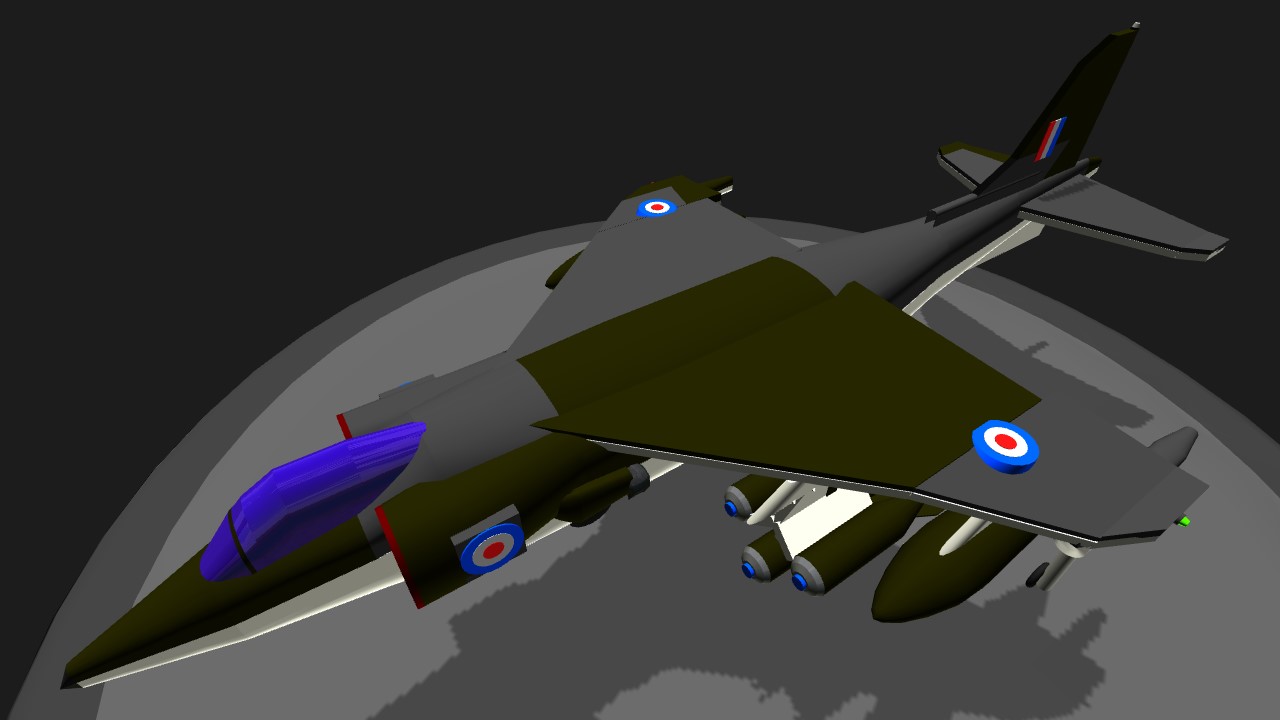
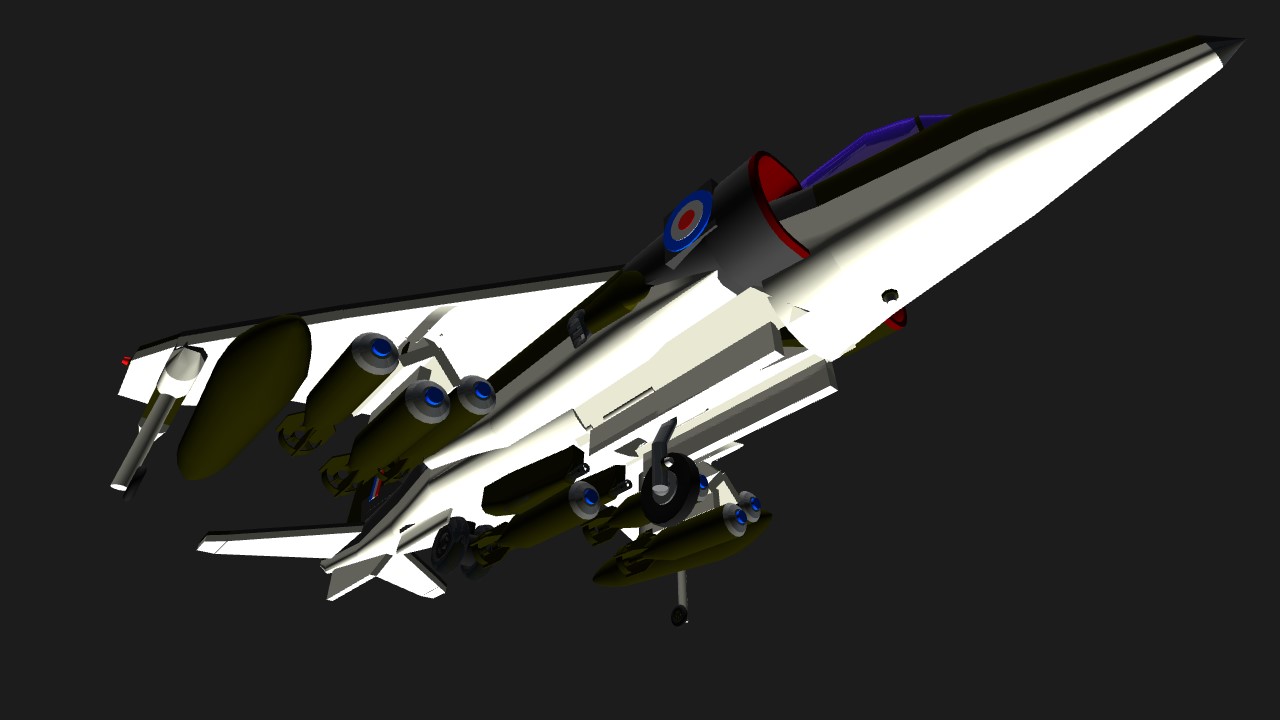
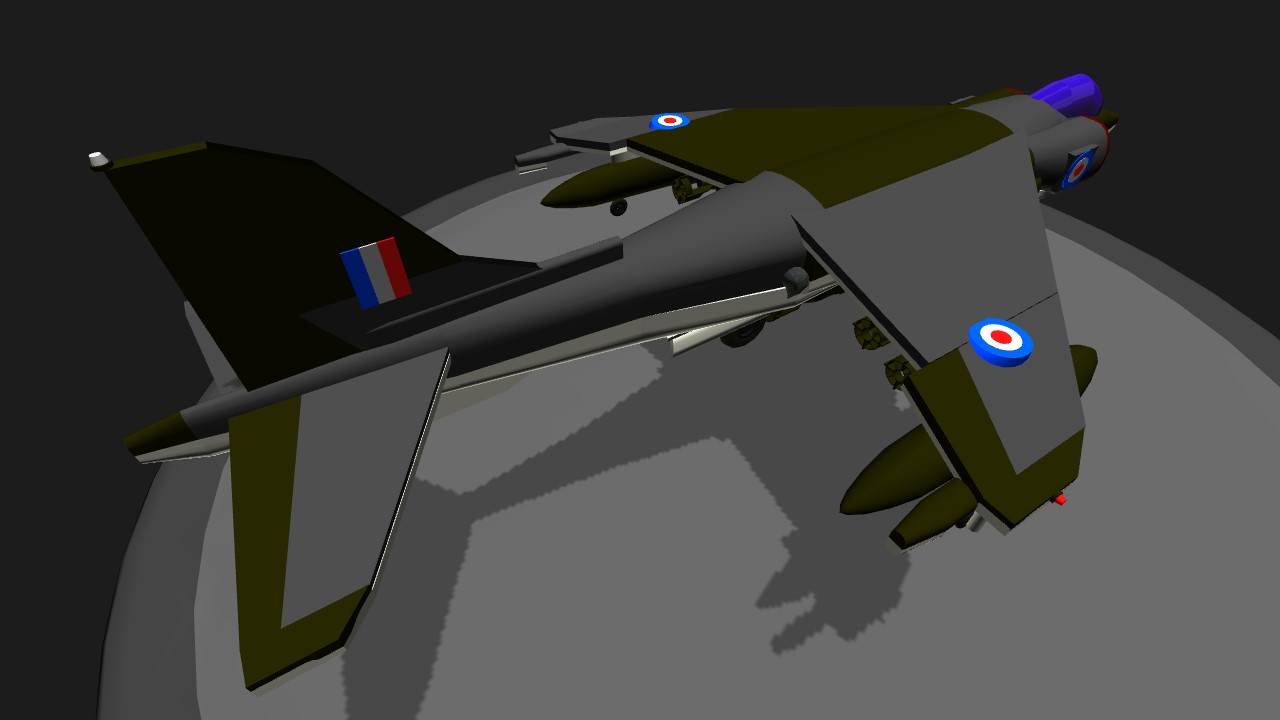
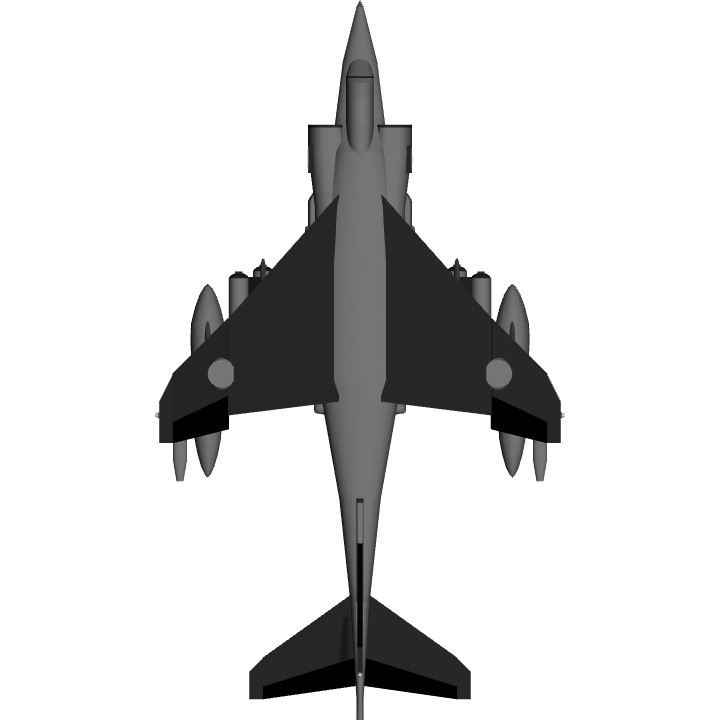
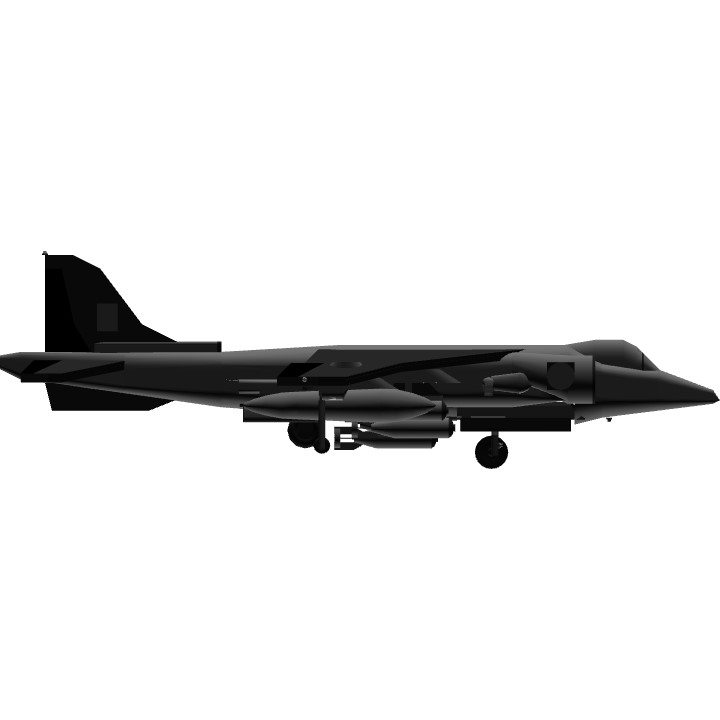
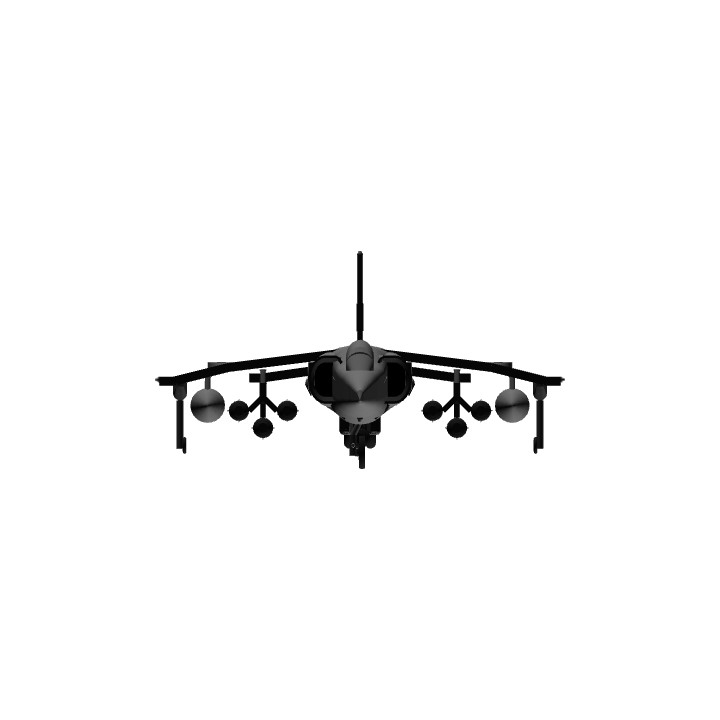
Nope. Have you tried it? @AudioDud3
Not sure what you mean? It has all four contact points; nose and wings controlled by ag2 plus vtol and main by the default gear control. @AudioDud3
Top job!
@JettStorm Thanks!